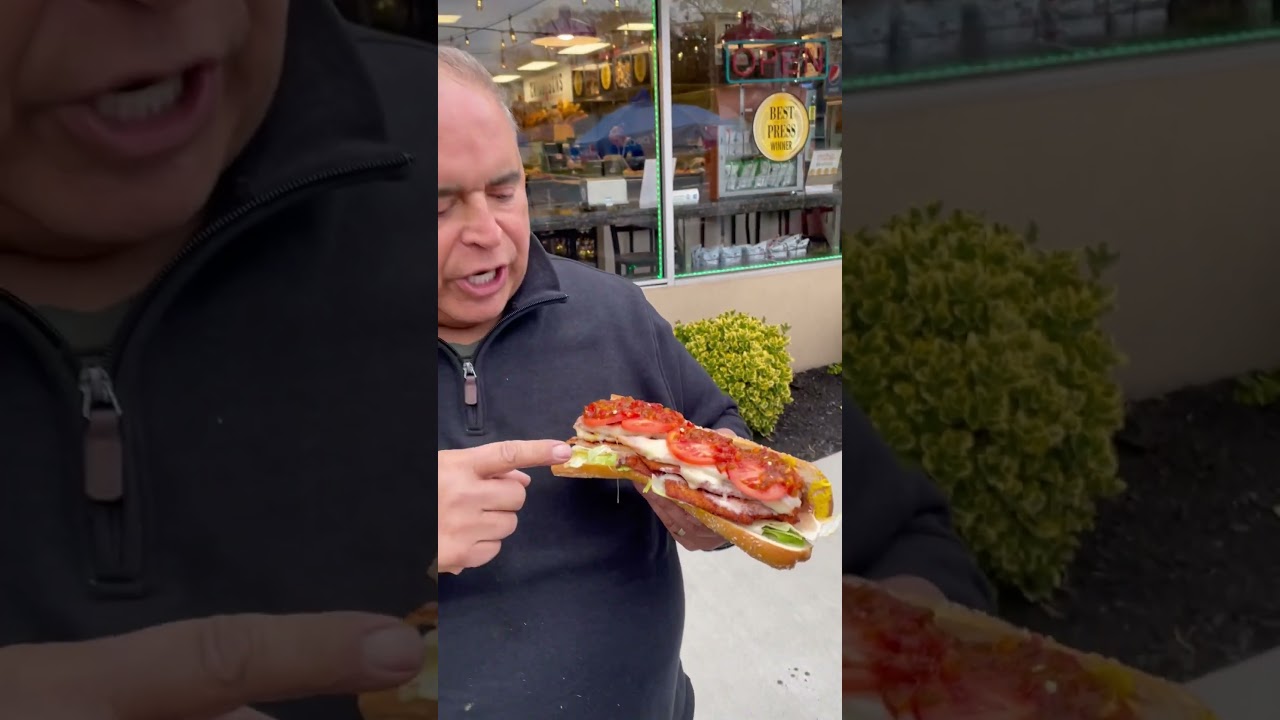1. The Complex Character of Vito Spatafore: A Deep Dive into His Role in The Sopranos
Vito Spatafore, played masterfully by Joseph R. Gannascoli, is one of the standout characters in HBO’s iconic series The Sopranos. At first glance, Vito is a loyal soldier in Tony Soprano’s mafia family, but as the story unfolds, his character becomes a profound commentary on the struggle for identity and acceptance within the brutal world of organized crime. Vito’s journey reflects not just the personal battles with his sexuality but also the broader themes of loyalty and betrayal prevalent in mob life.
As he grapples with his sexual orientation, Vito’s portrayal resonates with many viewers because it highlights the harsh societal norms within the mafia, where masculinity is paramount, and vulnerability is seen as a weakness. The character’s evolution from a devoted family man to a man fighting for acceptance in a hostile environment is nothing short of tragic. Vito’s role illustrates how tightly the threads of identity and loyalty are woven, often with deadly consequences.
Vito Spatafore isn’t just a character to be tossed into the vast ensemble of The Sopranos; he stands as a representation of those who exist on the fringes of acceptance. His storyline echoes the sentiments faced by many LGBTQ individuals, making his journey all the more compelling. The glimmers of hope he finds within the gay community contrast sharply with the violent world he leaves behind, creating a dynamic character who grapples with the very essence of who he is.

2. Top 5 Turning Points in Vito Spatafore’s Life That Led to His Downfall
Vito’s life was full of critical moments that led to his tragic end. Here’s a rundown of the five significant turning points that play a crucial role in his downfall:
Coming out in the mob world is nothing short of a death sentence. When Vito is outed as gay, the repercussions unfold rapidly. This pivotal moment marks the beginning of his disengagement from the crime family he once called home. The pain of rejection sends him spiraling, showcasing how often personal truth collides with societal expectation.
Vito’s plan to chase a new life in New Hampshire may seem like an escape route, but it’s fraught with dangers. Running away can feel like a fresh start, yet for Vito, it only underscores the harsh reality of leaving behind a violent past. His flight signifies a loss of identity and a desperate search for solace amid chaos.
As Vito becomes more involved with the gay community, he tastes acceptance for the first time. This newfound bond offers a stark contrast to his past life but also becomes a liability. This double-edged sword illustrates the tension between the search for belonging and the threats that linger in his former life.
Vito’s need for self-assertion clashes violently with Tony’s authority. Their confrontation becomes a centerpiece of tension, revealing how personal identities threaten professional loyalties in a mafia context. This fraught moment is pivotal, illustrating the heart of the mob’s code and the fatal consequences of crossing it.
Vito’s brutal murder is so much more than just a conclusion; it’s a stark reminder of the unforgiving nature of the mafia. Captured by his former life, he finds himself beaten to death, a graphic symbol of intolerance. His death marks a point of no return, encapsulating the grave risks of living authentically in a world dominated by hatred.

3. The Impact of Vito’s Death on the Soprano Family Dynamics
Vito Spatafore’s heart-wrenching demise sends shockwaves throughout the Soprano family. The fallout from his death catalyzes a cascade of tension and conflict, particularly affecting key characters like Tony, Paulie, and Christopher. Each reaction to Vito’s murder reveals the raw emotion and complexity of loyalty within the mafia.
Tony Soprano, usually the pillar of strength, finds himself enmeshed in guilt and a struggle for power. His response to Vito’s death alters his standing in the eyes of his crew and family, testing notions of loyalty against personal feelings. This upheaval is palpable as it introduces a hesitation in Tony, showcasing vulnerability that starkly contrasts with his usual bravado.
Paulie Gualtieri, ever the traditionalist, faces a moral dilemma that forces him to question his own beliefs and alliances. His reaction highlights the brutal realities of mob life and the harsh measures taken to uphold a cover of masculinity. Paulie’s internal conflict emphasizes the disintegration of their tight-knit family in the face of betrayal and death.
Christopher Moltisanti also grapples with his loyalty. He’s torn between the codes of the mafia and the personal connection he felt towards Vito. This tension illustrates the thin line between loyalty to the family and the need to acknowledge human emotion, which complicates the relationships within the Soprano family.

4. The Legacy of Vito Spatafore: A Reflection on Representation in Media
Vito Spatafore’s storyline reverberates beyond the confines of his fictional narrative, marking a significant chapter in the representation of LGBTQ characters in television. During a time when such identities were often marginalized, Vito’s journey sparked important discussions about acceptance and identity. On The Sopranos, he navigates the treacherous waters of love, loyalty, and personal truth in a world that is anything but forgiving.
Vito’s portrayal challenges traditional depictions of masculinity that often dominated media narratives. His character doesn’t just add diversity; it gives voice to the struggles of those constantly at odds with societal norms. He emerged during a period when the entertainment industry began to take baby steps toward inclusivity, making his existence on-screen a significant milestone for future narratives.
The impact of Vito’s story resonates in contemporary media, driving shows to create richer, more complex LGBTQ characters. Networks and creators have a responsibility to tell these stories authentically, ensuring that individuals like Vito find representation that reflects their realities. Vito’s legacy serves to inform not just producers but audiences, instilling an awareness that powerful stories resonate beyond the screen.

5. Real-World Parallels: The Tragic Reality of LGBTQ Individuals in Organized Crime
Exploring Vito’s tragic narrative invites a broader conversation about the real experiences of LGBTQ individuals confronting violence and exclusion, particularly in organized crime. Historically, many have faced severe repercussions for their sexual orientation, akin to Vito Spatafore’s journey.
The underbelly of organized crime can often be ruthless, where a hint of homosexuality does not just compromise loyalty but places one’s life in peril. Real-life stories abound of LGBTQ individuals who have fought to exist authentically in environments that remain hostile, mirroring Vito’s horrific fate. Such narratives highlight the pervasive threats that exist beyond the fictional realm.
The tragedy of Vito Spatafore is a cautionary tale reflecting that intolerance and violence are not strictly confined to television scripts. Addressing these realities sheds light on the urgent need for societal change, advocating for acceptance and understanding in communities that continue to grapple with these issues. Vito’s character, while fictional, resonates with truths that remain painfully relevant, reminding us of the harsh world many still navigate today.
Closing Thoughts: Vito Spatafore’s Lasting Influence on Pop Culture and Beyond
The poignant tale of Vito Spatafore transcends mere entertainment, making a powerful statement about human identity, societal norms, and the often conflicting demands of loyalty and acceptance. His story in The Sopranos, while rooted in fiction, echoes the real struggles of many in marginalized communities. Vito’s journey not only redefines what it means to be authentic within an unforgiving landscape but captures the darkness and resilience that define human existence.
Vito Spatafore stands as a testament to the complexities of identity and the battles many face in pursuit of acceptance. His legacy invites us to reflect on the need for greater understanding and compassion in an ever-changing world. Despite the dark narrative arc of his life, Vito’s story serves to inspire meaningful conversations and ultimately champions the continued fight for acceptance. As we look back at The Sopranos, Vito’s character remains a beacon of hope—and a powerful reminder that even in the shadows, the quest for acceptance and love persists.
Vito Spatafore: Fun Trivia and Interesting Facts
A Complicated Legacy
Vito Spatafore, the unforgettable character from “The Sopranos,” left behind a trail of intrigue and allure that resonates with many fans. His tragic demise resonated not only within the show but also in the lives of viewers grappling with their own challenges. Did you know that his character often donned a distinguished work jacket? This fashion choice captured his multi-layered identity, combining a tough exterior with hidden vulnerabilities. Beyond appearances, the character’s journey invites fans to reflect on navigating life’s hurdles, akin to the sentiments expressed in The Third Step prayer aa—embracing acceptance and courage as one journeys through the ups and downs of life.
Behind the Scenes
The brilliance of Vito’s portrayal came from actor Joe Gannascoli, who carved out a niche in the acting landscape. Interestingly, he also penned a cookbook, blending his passion for cooking with storytelling. This fusion mirrors how intriguing narratives—such as the horror flick House at The End Of The Street—keep audiences on the edge of their seats, much like Gannascoli’s work enriched the world of “The Sopranos. By flipping the script on typical mobster portrayals, his character brought vulnerability to the forefront, sparking dialogues around masculinity and the struggle with identity.
Pop Culture Connections
Vito’s life also intertwines with pop culture in surprising ways. For instance, his story resonates well with today’s audience, especially with mind-bending films like Mortal Kombat 2 Movie, which churn out endless theories and interpretations, just like discussions surrounding Vito’s fate. Moreover, his story can be viewed through a lens as quirky as the Scout Guide zombie apocalypse, where survival sparks creativity and resourcefulness—a nod to Vito’s resilience against societal pressures.
In sum, Vito Spatafore isn’t just about mobster stereotypes; he’s a character that’s emotive and relatable. The way his narrative unfolds compels viewers to reflect on the trials of his character, perhaps even drawing them in with the allure of the charismatic adult film star Kira Noir. So, dive into this layered tale, as it continues to evoke fascination and open up lively conversations!

What happened to Vito Spatafore?
Vito Spatafore was brutally beaten to death with a pool cue on orders from Phil Leotardo, with Dominic “Fat Dom” Gamiello and Gerry Torciano carrying out the act while Phil watched.
Why did Vito get whacked?
Vito got whacked because of his homosexuality, which was seen as a threat to the image of the DiMeo Crime Family. His killing was a brutal message against those who would bring shame to the mob.
Why does Vito from Sopranos walk funny?
Vito from The Sopranos walked funny because the actor, Joseph R. Gannascoli, had serious hip problems that required both of his hips to be replaced after the show, improving his mobility.
Who is Vito Spatafore based on?
Vito Spatafore is said to be based on real-life mob figures, particularly Vito Arena, a gangster known as “The Gay Hitman,” who had a complex personal life that mirrored some aspects of Vito’s character on the show.
Why was Vito assassinated?
Vito was assassinated mainly due to his sexual orientation, which was not accepted in the mob world, leading to his brutal and public execution as a punishment.
What happened to Vito’s friend?
Vito’s friend Dominic “Fat Dom” Gamiello was killed by Carlo Gervasi while being held by Silvio Dante, which showcased the violent inner workings of the mob.
Does Silvio get whacked?
Yes, Silvio does get whacked in the series, suffering a life-threatening injury and not making it out alive during critical moments in later episodes.
Why does Phil grip the bed?
Phil grips the bed during a tense moment in the series, which symbolizes both his control and the pressure he feels in the high-stakes world of organized crime.
Who was Fat Dom in The Sopranos?
Fat Dom was a violent enforcer for the DiMeo Crime Family in The Sopranos, notorious for his brutal methods, especially in Vito’s assassination.
What is the saddest Sopranos episode?
The saddest episode of The Sopranos is often considered to be “Long Term Parking,” where major character deaths bring a heartbreaking turn to the story.
Who betrayed Tony Soprano?
Tony Soprano was betrayed by multiple characters throughout the series, most notably by friends and associates, with the most famous betrayal coming from his own cousin, Tony Blundetto.
Why does Tony Soprano say Gabagool?
Tony Soprano’s quirk of saying “Gabagool” instead of “capicola” has become an iconic catchphrase and showcases his Italian-American heritage in a light-hearted way.
Who is Tony Soprano based off of?
Tony Soprano is loosely based on real mobsters, including the life experiences of various crime figures from New Jersey and New York, blending fact with fiction.
Was The Chair Breaking in Sopranos scripted?
The chair breaking in The Sopranos was indeed scripted, adding a comedic moment that contrasted with the show’s heavier themes.
Who killed Phil Leotardo?
Phil Leotardo was killed by Walter “Walt” too, who executed him in a fitting revenge for the events that unraveled earlier in the series, showcasing the cycle of violence in the mob world.
















